Zereshk Polo is a Persian Barberry rice dish and a staple dish in our cuisine. It's been a personal favorite since childhood, here I'll show you how easy it is to make with tips from my mama. With of course crispy tahdig, made in a special way using saffron!
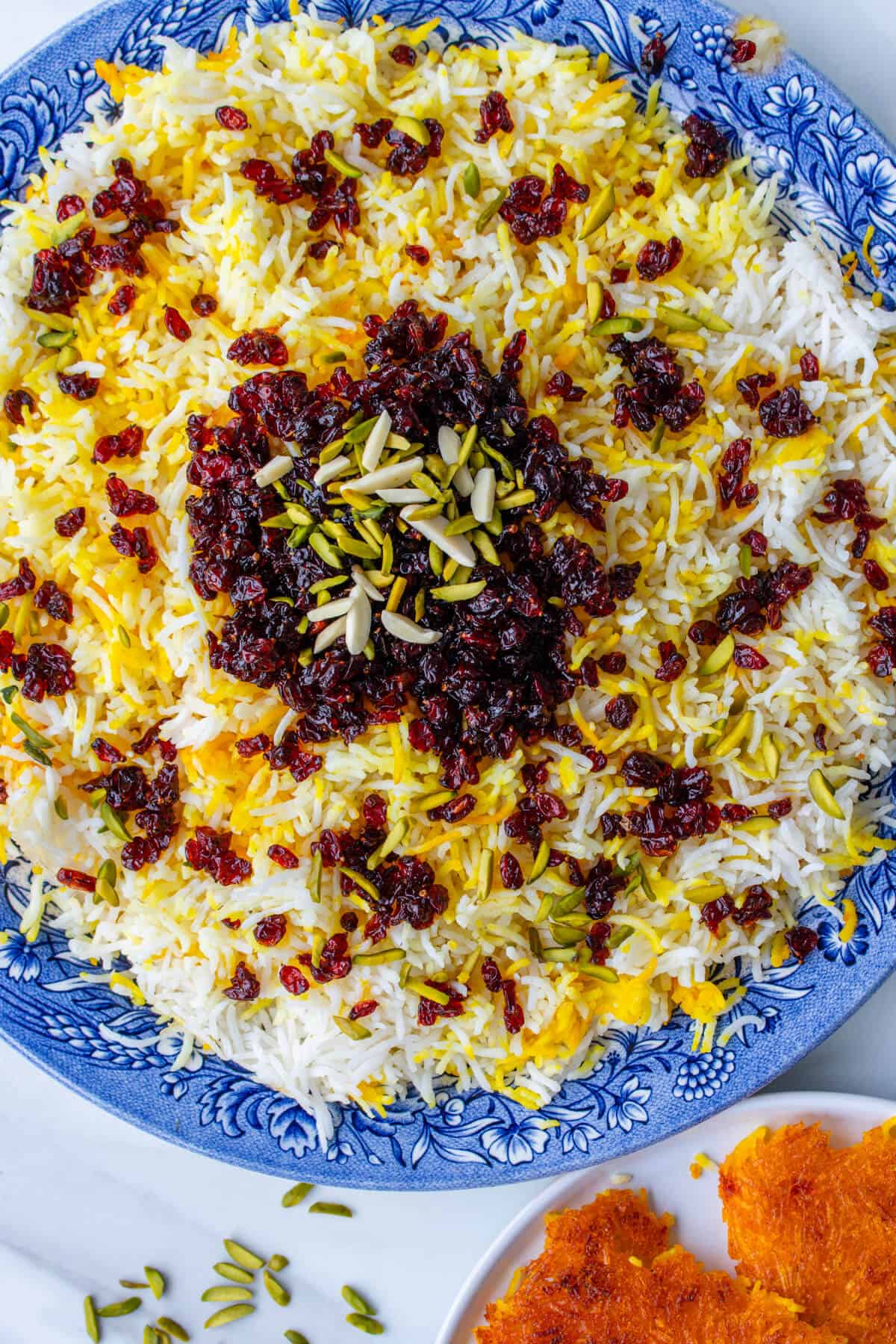
True story…Zershk Polo is actually one of the first Persian recipes I learnt to make! It’s one that my mama would cook frequently as it's quick and easy to make, so we had it often on weeknights once she came home from work. Here I'll show you tips my mama taught me, which was passed down from my grandma Mama Mansour 🙂
If you haven't tried it before, zereshk polo is a barberry rice (zershk translates to barberries, and polo means rice). Barberries are tiny red berries that are quite tart and sour, however they are sweetened when cooked. Traditionally this dish is served with a saffron chicken stew known as Zereshk Polo ba Morgh (with chicken). As I no longer eat chicken, I serve it with a chickpea stew which is cooked the same way with saffron and onion. I've of course made authentic Persian rice with crispy tahdig, but extra special with a saffron tahdig!
The tahdig is the crispy rice from the bottom of the pot and its the most popular and everyone's favorite! We make this with all of our Persian rice dishes such as lubia polo and even makaroni - Persian spaghetti. The barberries are sautéed with sugar until plump and juicy, so they then become sweet and sour. I love when eating them that they burst in your mouth, yum! What's great is that the barberries are sprinkled on top of the rice and also served on the side so you can control how much you like. I love them, so I tend to pile it on 😋
Saffron is used 3 different ways in this recipe, but don't let that scare you away. Whilst saffron is the worlds most expensive spice, crazy right! A little goes a long way if prepared correctly. I will teach you simple steps to help you get the most of the saffron. We use it quite often in Persian recipes, from sweet to savory such as bastani sonnati (ice cream) and kashke bademjan (eggplant dip).
Table of Contents
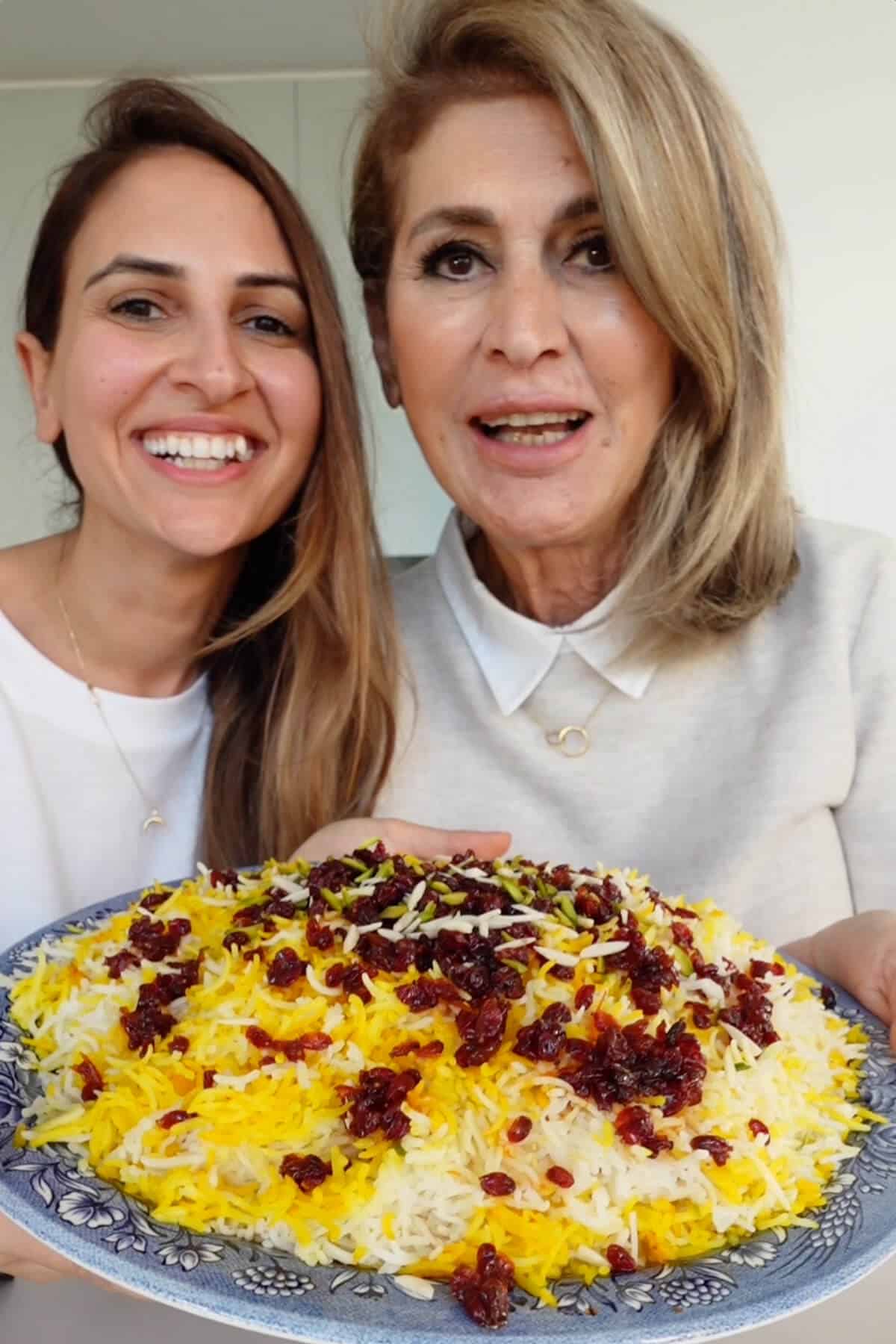
What makes this recipe special
- Authentic Persian Recipe: This recipe was taught by my mama and passed down from my grandma so its as authentic as it gets!
- Burst of Flavor: Tangy barberries combined with saffron and sugar create the perfect balance with of course the crispy tahdig
- Quick & Easy: Despite its elegant look, it uses simple steps and made in no time
- Versatile: Pair it with different proteins or stews, I serve it with a Persian style chickpea stew
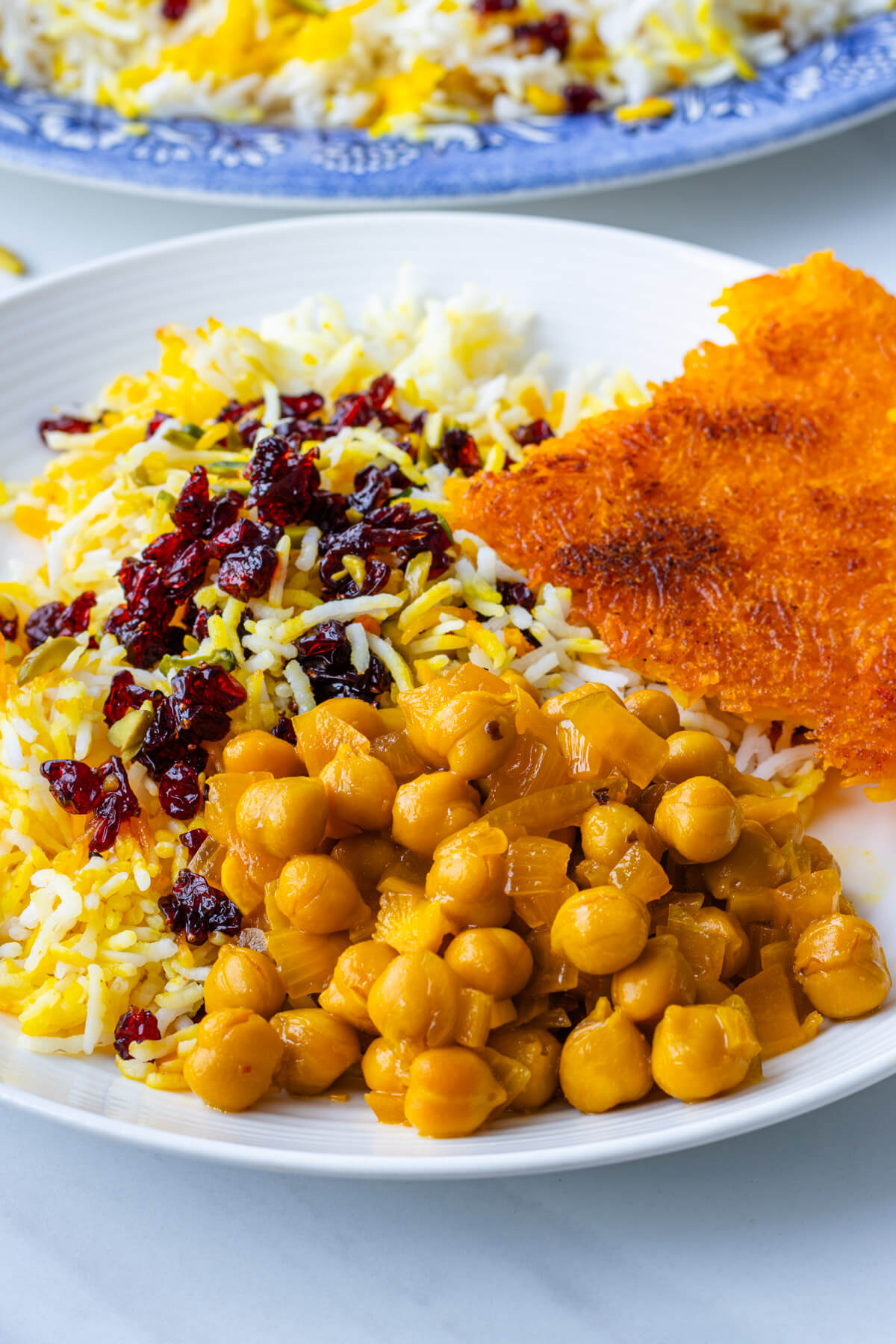
What is Zereshk Polo?
Zereshk Polo translates to barberry rice in Persian/Farsi language. It's a very popular Persian dish alongside ghormeh sabzi, thats commonly served at parties, gatherings, and it's also simple enough to make for weeknight dinners. Its a personal favorite since childhood and one of the first Persian foods I learnt to make 😊
The barberries are cooked down with sugar which balances out their tartness, creating a lovely balance of sweet and sour. Fluffy Persian rice is cooked of course with crispy tahdig (crispy rice from the bottom of the rice pot). It's then layered with the barberry mixture and garnish.
Traditionally served with saffron chicken which is known as zereshk polo ba morgh (barberry rice with chicken). I've made a similar vegan variation with this saffron chickpea stew.
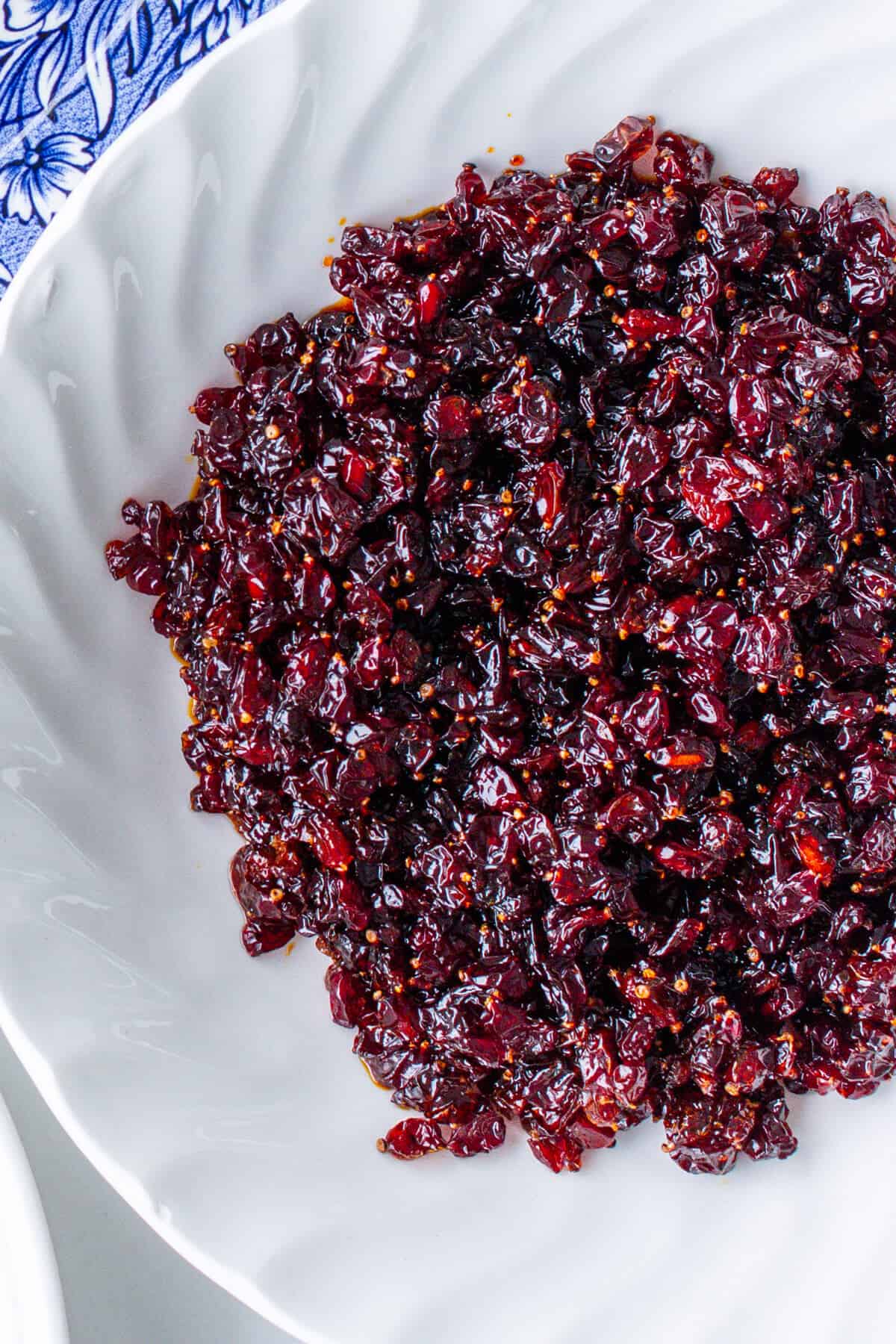
Ingredients and Substitutions
- Basmati rice is a long-grain rice and a staple in Persian cuisine. We prepare it with a double cooking method which is the ultimate key to perfect fluffy rice along with a delicious crispy tahdig
- Barberries (zereshk) are of course the star of the show! They're tiny red berries that are tart and sour, however sweetened when cooked. Purchase them from Persian grocers and possibly Indian or Middle Eastern supermarkets, or online. If unavailable, dried cranberries can be a substitute, but they're much sweeter so I would reduce the sugar
- Saffron is used a few different ways enhancing the dish with its beautiful aroma, color and flavor. A little goes a long way so be sure to follow my recipe to infuse and make saffron water. Turmeric sometimes can be substituted for the golden color, but isn't a direct substitute as it will change the flavor
- Sugar helps balance the tartness of the barberries without making the dish overly sweet
- Extra virgin olive oil is used for cooking and for making the crispy tahdig. Butter is commonly substituted, along with vegetable oil
- Slivered pistachios and almonds are a traditional garnish that adds crunch and gives its signature look. You can swap in other nuts or omit them if preferred
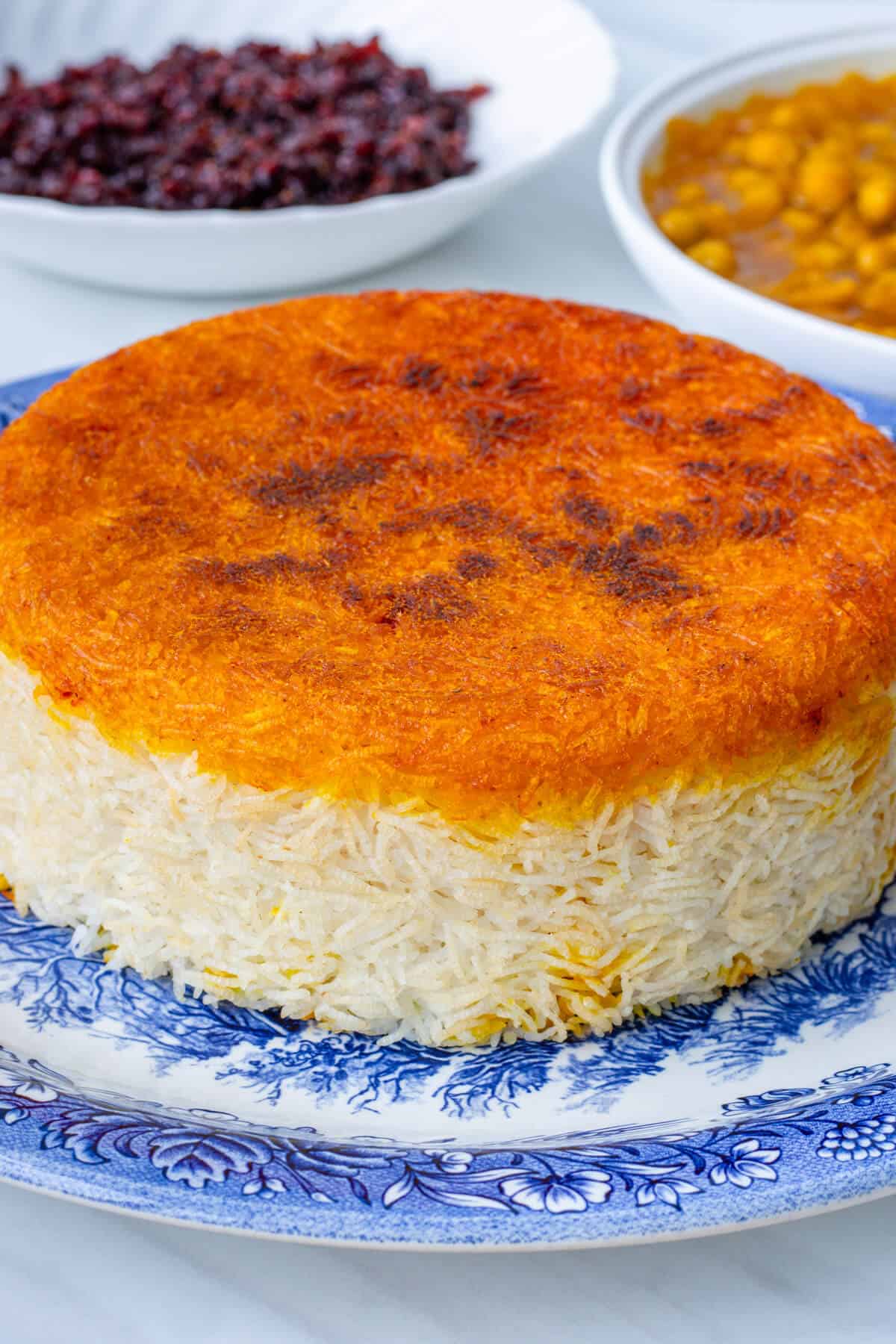
How to make Zereshk Polo - Persian Barberry Rice
This Persian rice dish is a personal favorite growing up. The sweet and sour barberries with saffron rice are a match made in heaven! Follow my simple steps below (note quantities are listed in the recipe card below)
Parboil Rice and Prepare Saffron
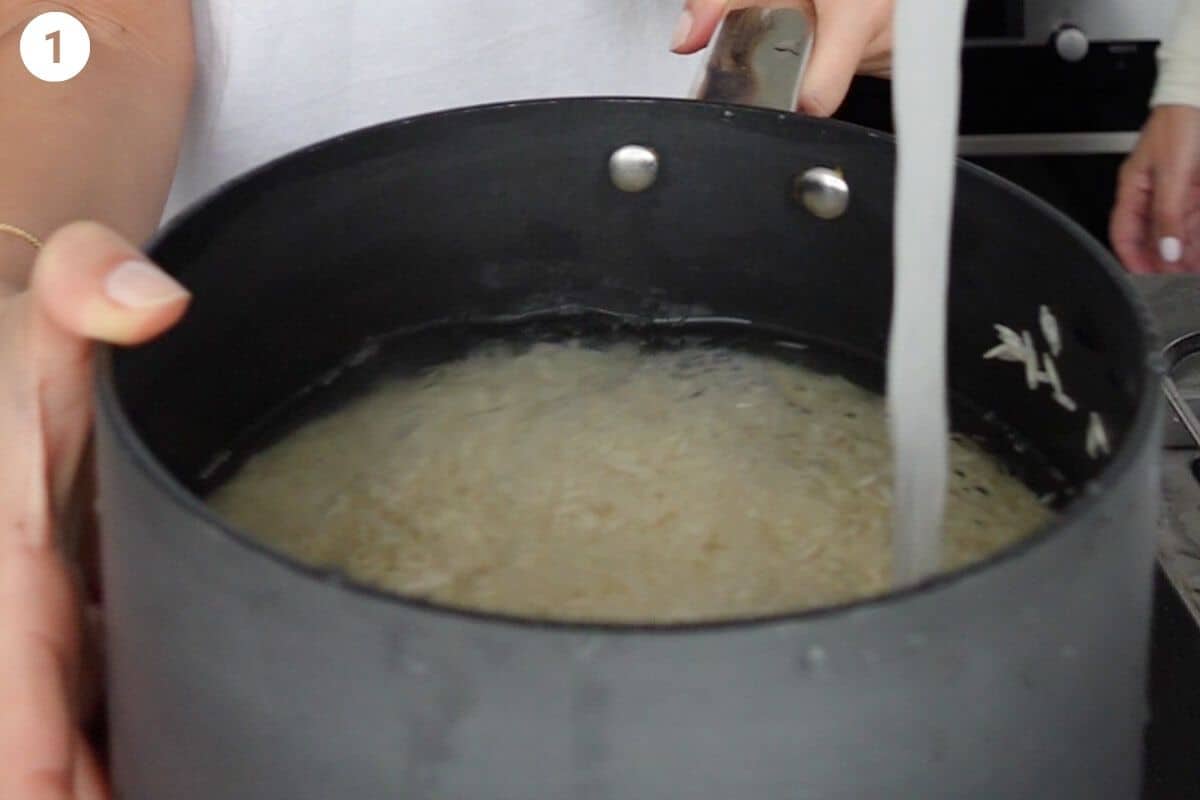
Add rice to a non-stick pot and wash under a running tap (~ 4-5 times)
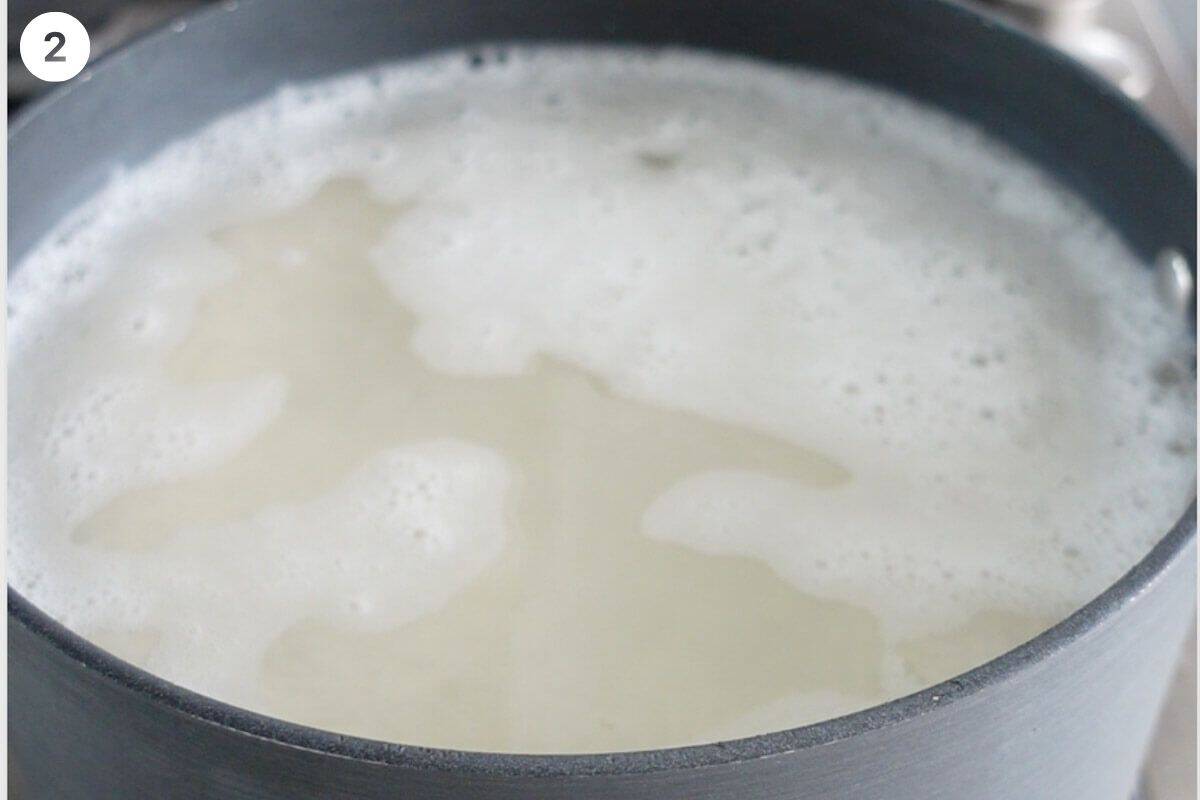
Fill with clean water then add salt. Simmer on medium-high heat for 10-12 minutes to parboil
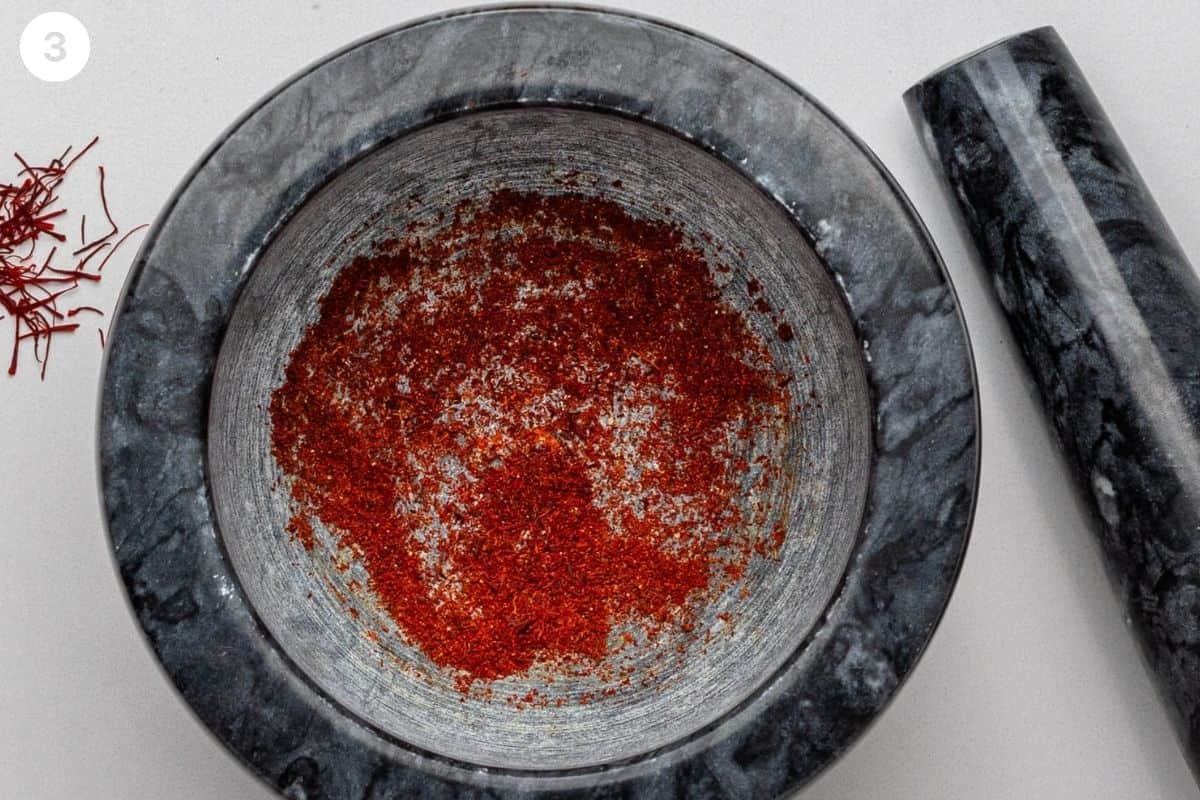
Grind saffron threads into a powder consistency using a mortar and pestle
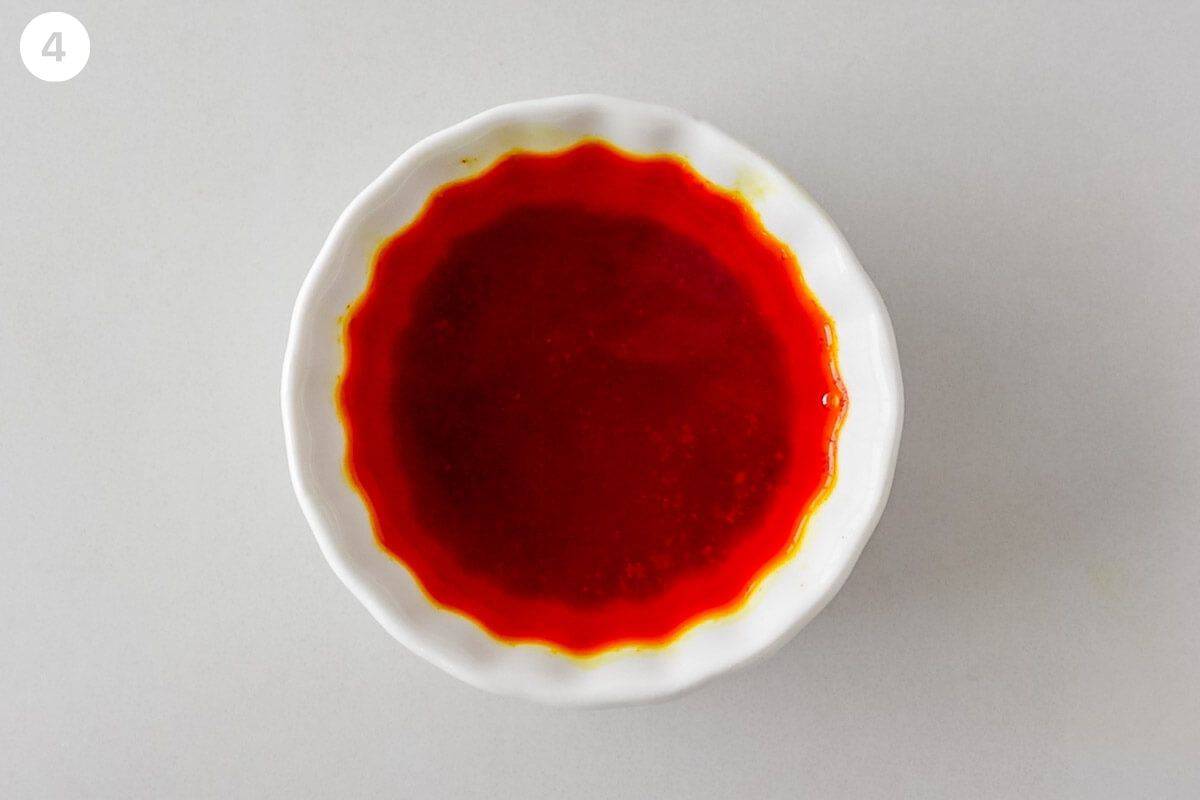
Add ½ teaspoon of ground saffron to a small ramekin then pour over a few tablespoons of boiling water. Leave to infuse
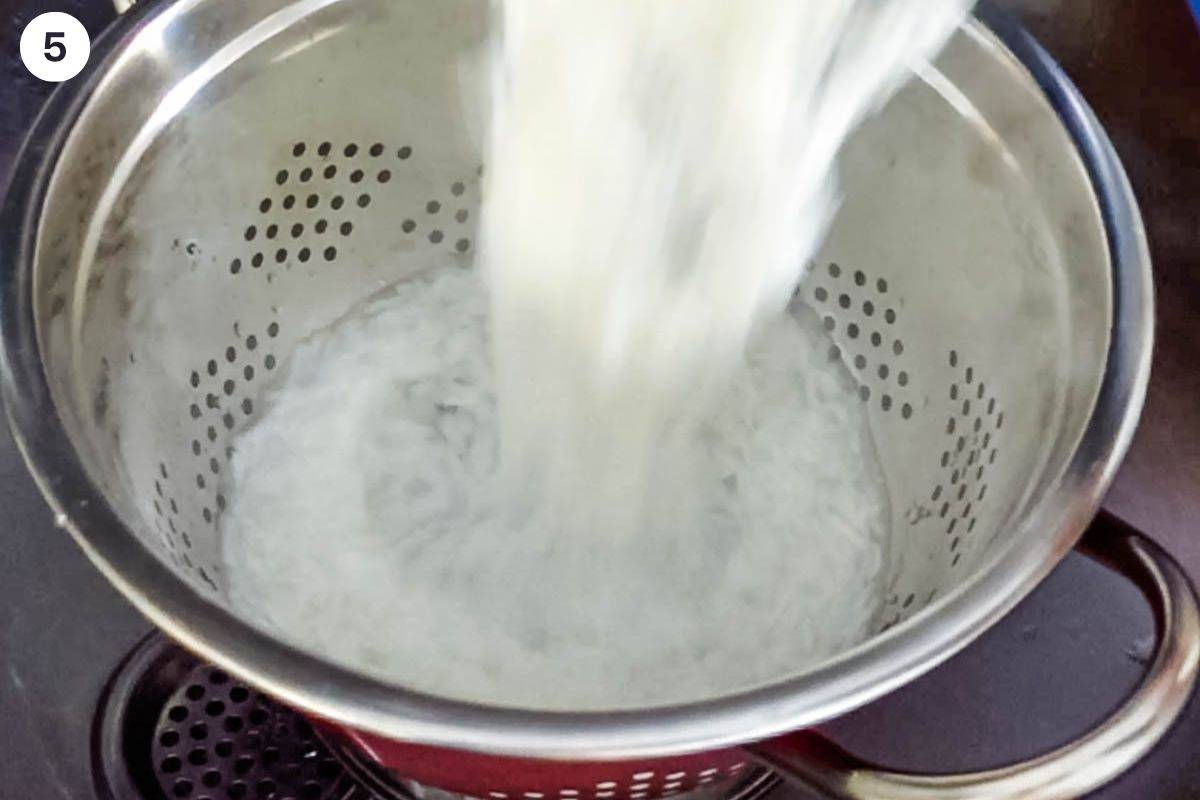
When rice is al dente, drain in a colander. Then rinse under cold water with low water pressure
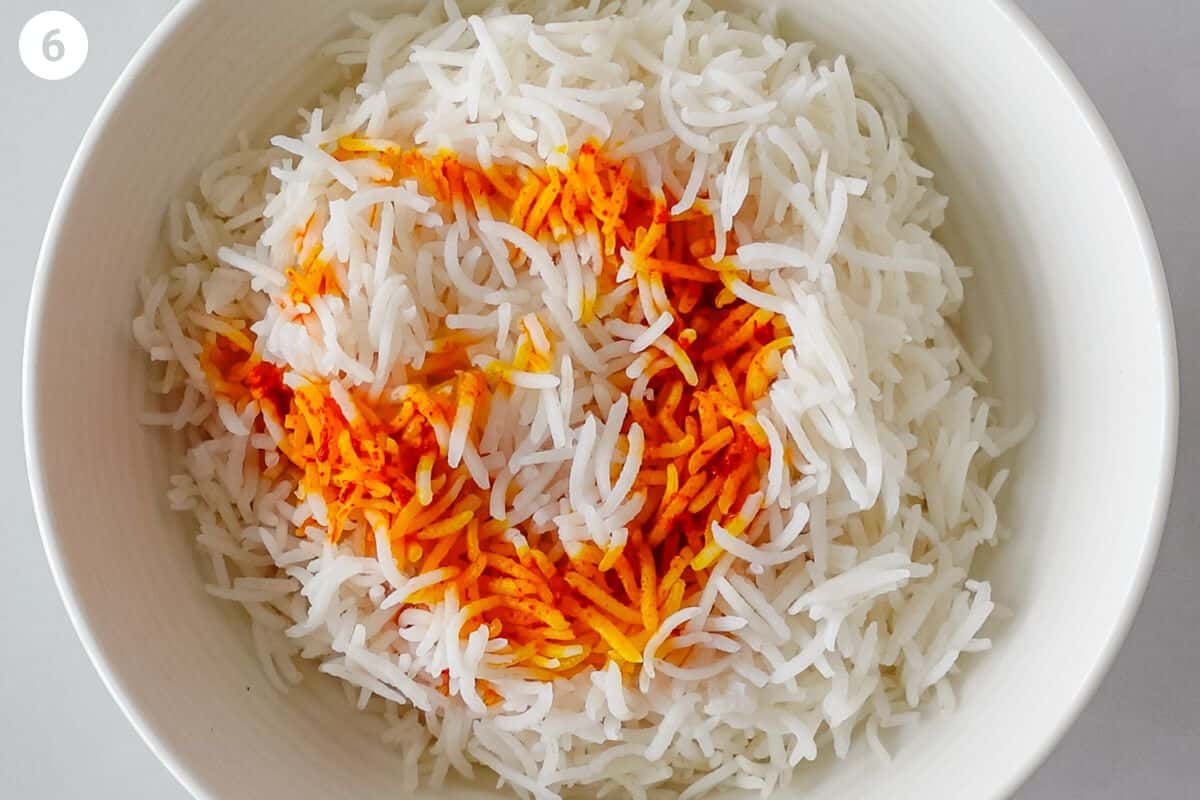
To make the saffron tahdig, add a few ladles of the rice to a bowl. Then drizzle some of the saffron water and mix
Cook Rice and Prepare Barberries
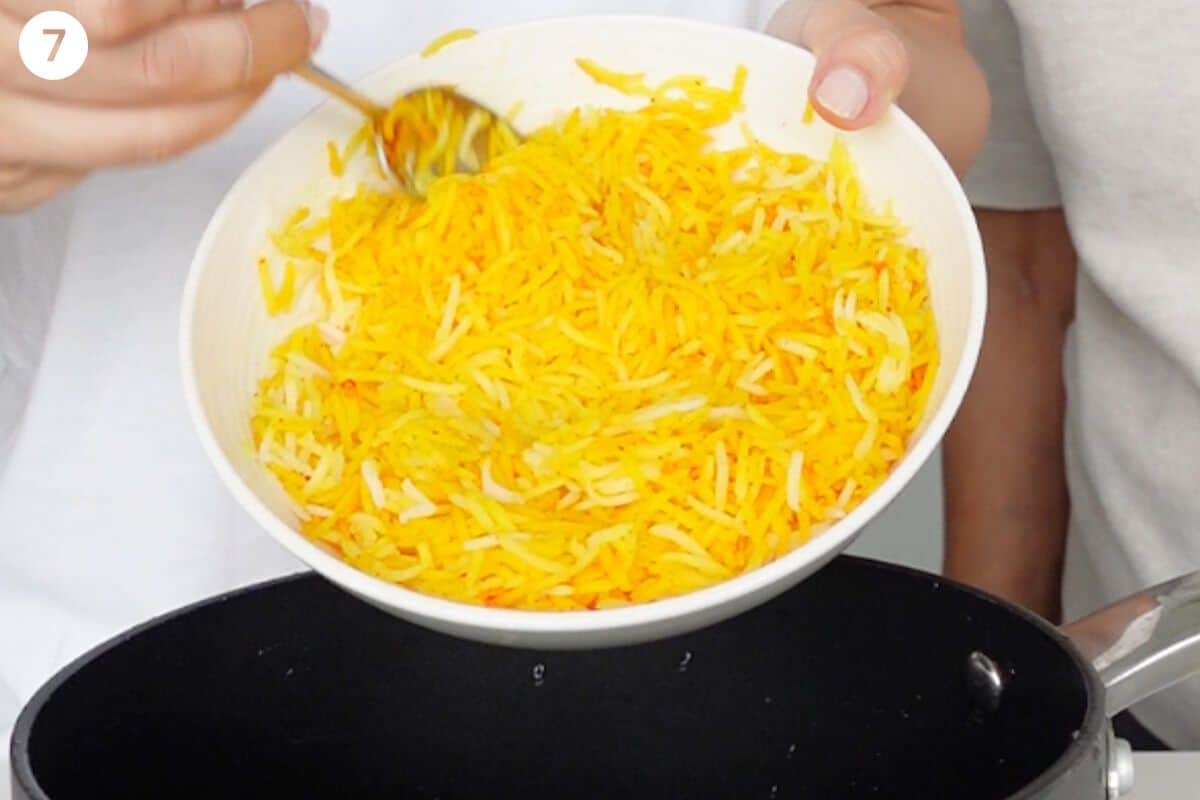
Add olive oil to the bottom of the same pot. Then add the saffron rice as an even layer
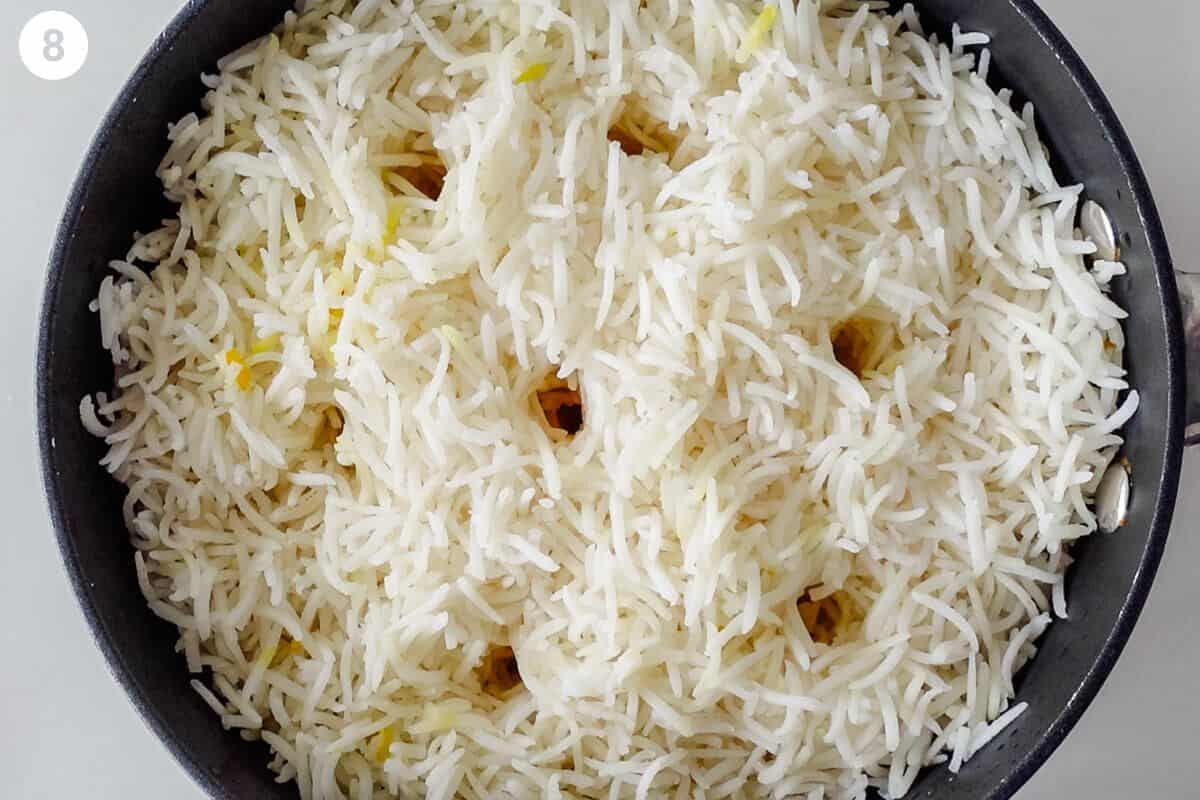
Pour in the remaining rice and make holes to act as air pockets using the handle of a wooden spoon
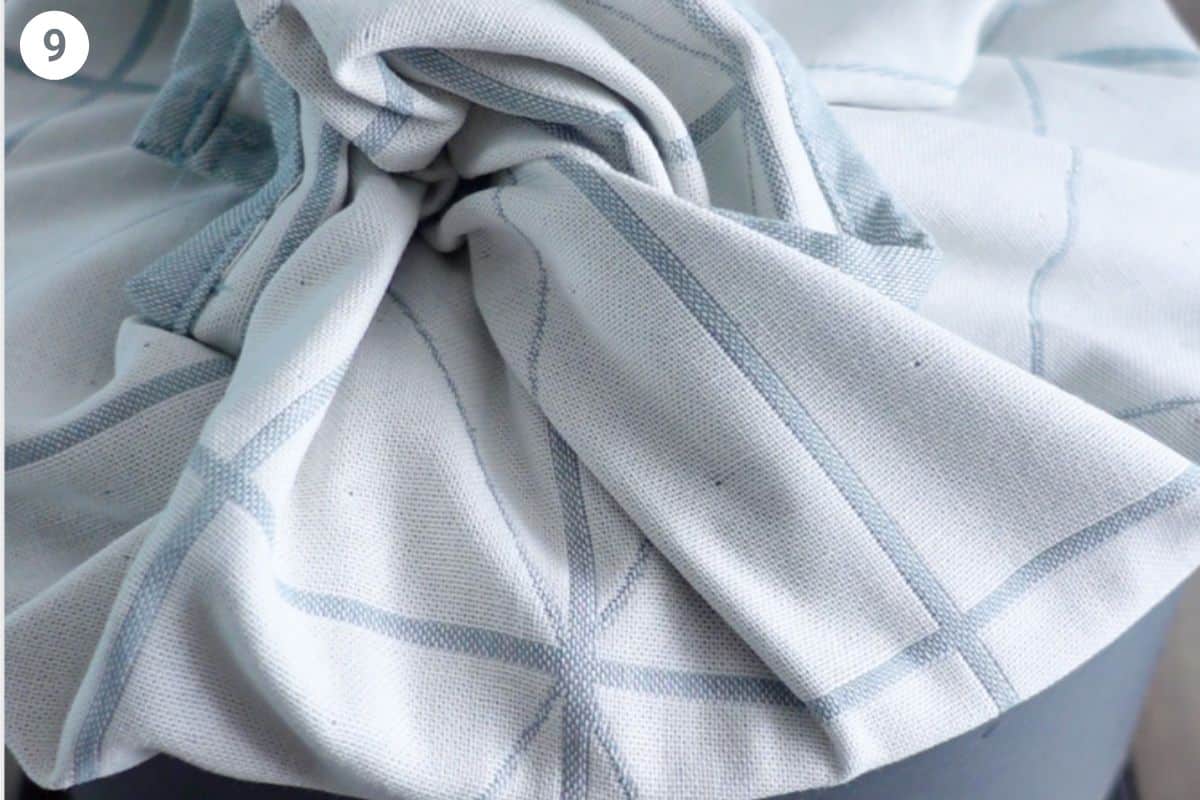
Wrap the lid with a clean kitchen towel, add a splash of water to the pot and place the lid on. Cook on low heat for 45 minutes
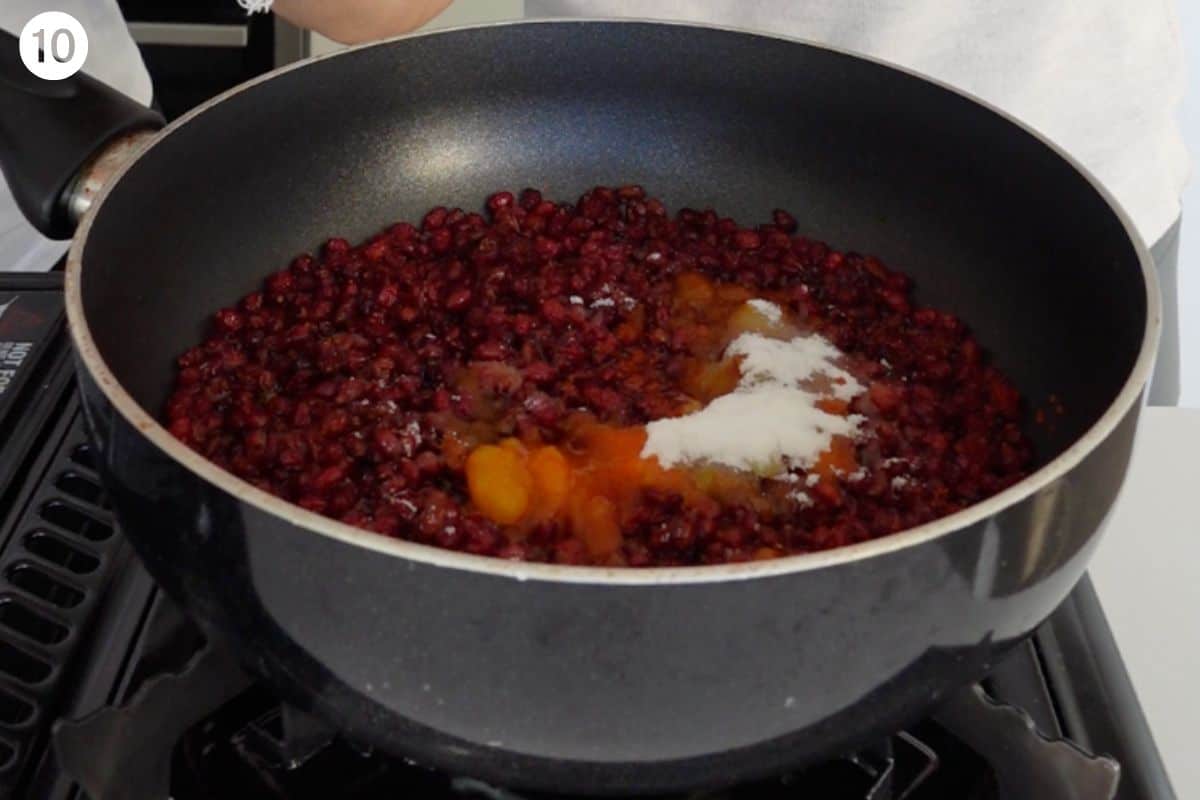
Rinse barberries in a colander under cold water. Then add to a pan with olive oil, sugar and a drizzle of the saffron water
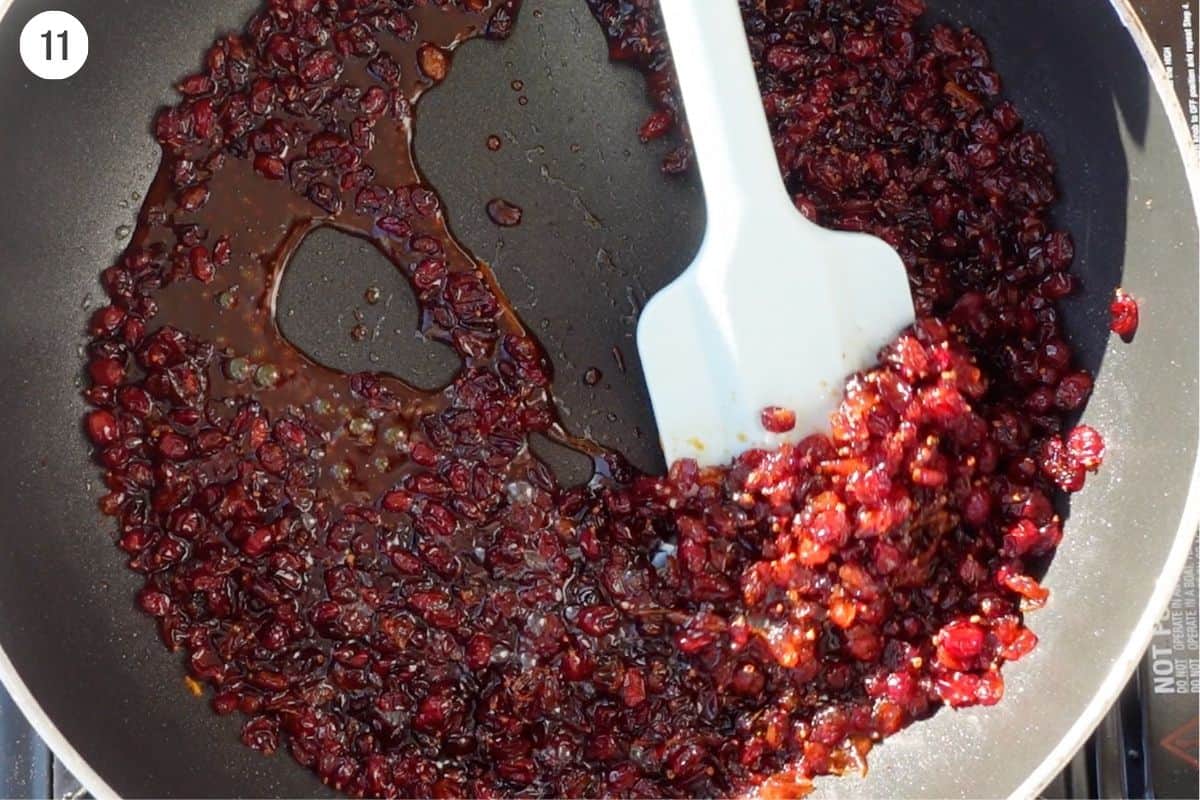
Simmer on low heat for 3-5 minutes, stirring frequently
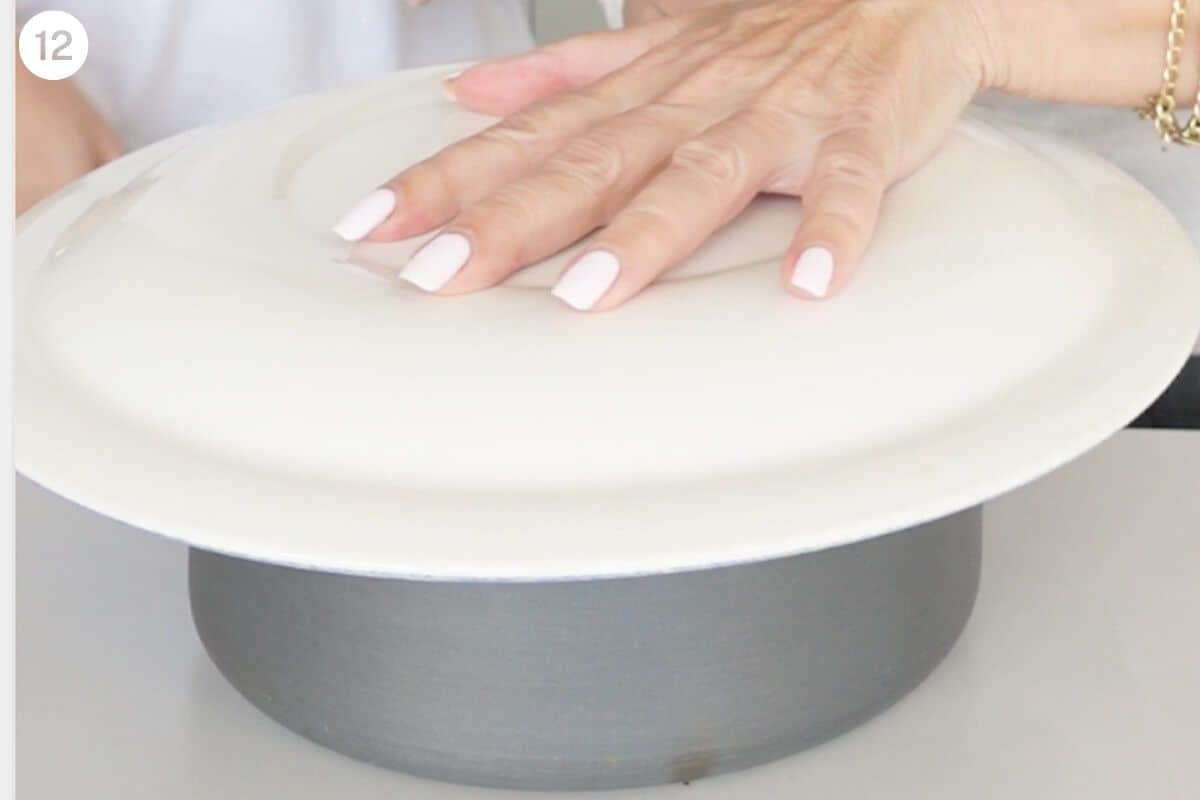
When the rice is ready, remove the lid and place a large dish over the pot. Gently flip the pot upside down
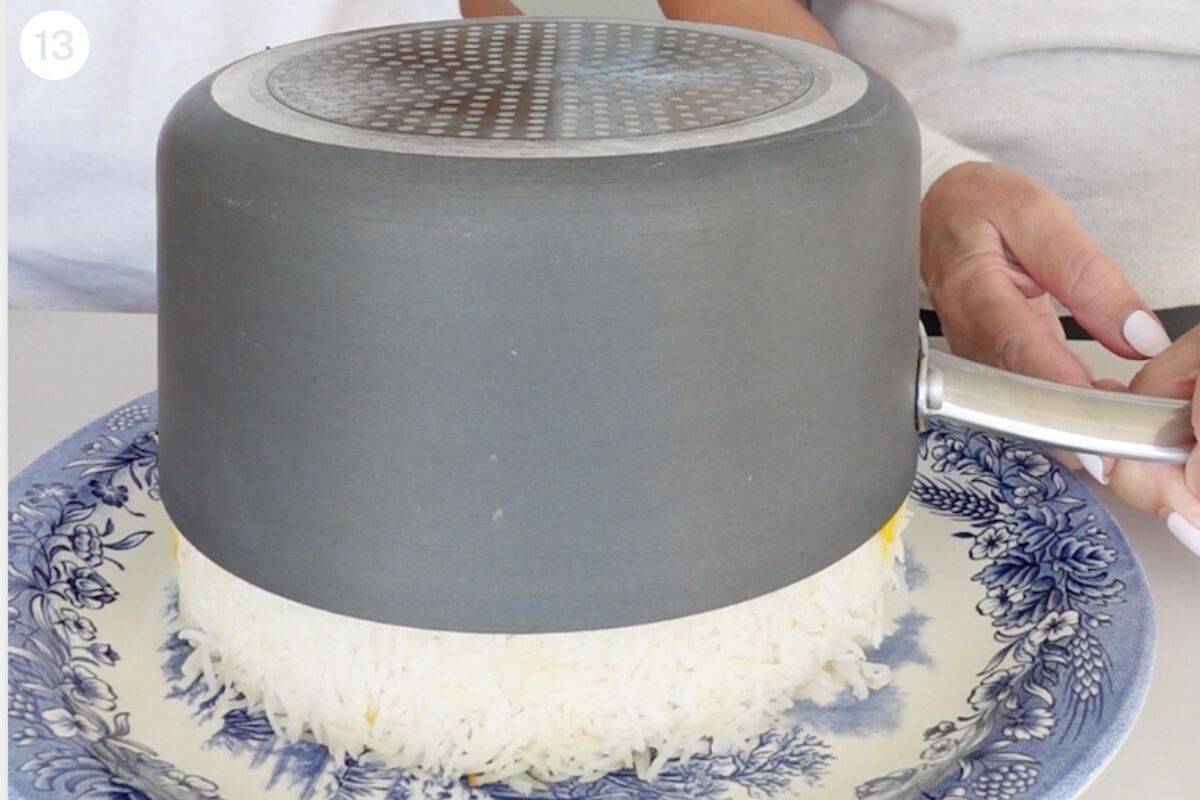
Carefully lift the pot and reveal the rice with crispy saffron tahdig
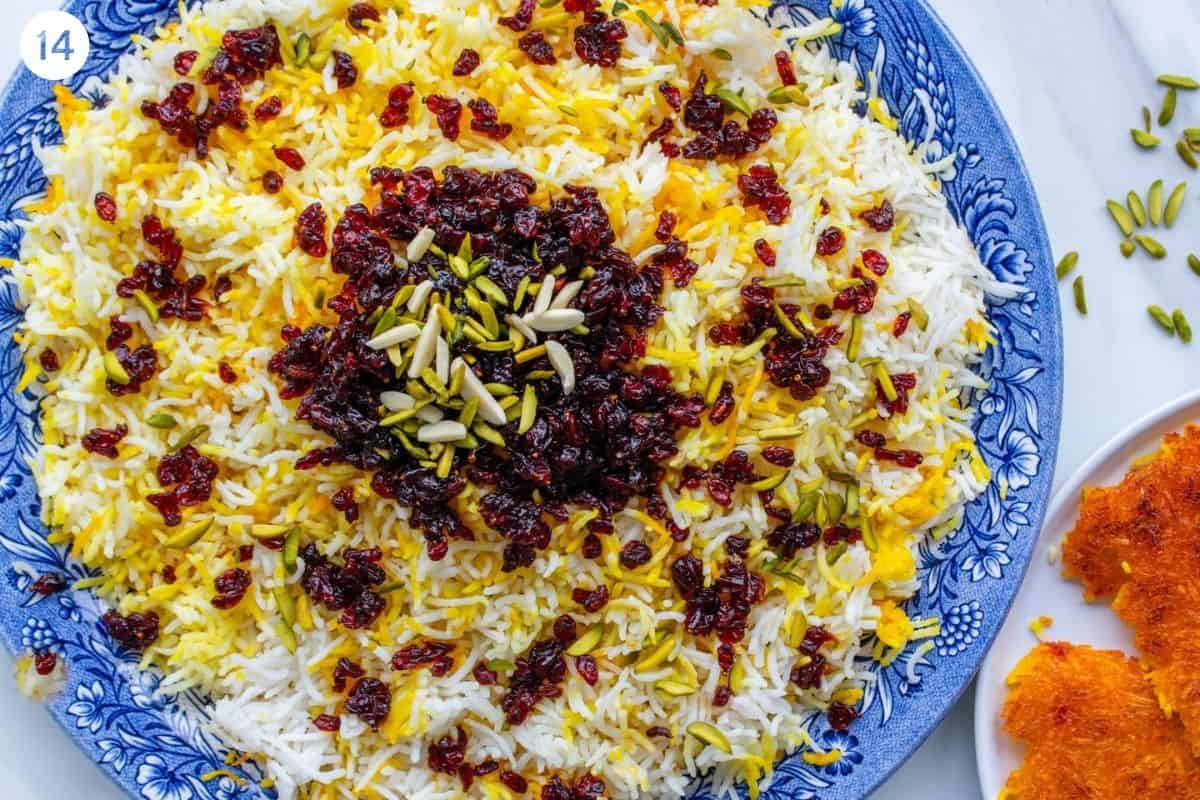
To serve, remove the tahdig and sprinkle the top of the rice with a layer of the barberries then garnish with slivered pistachios and almonds. Enjoy!
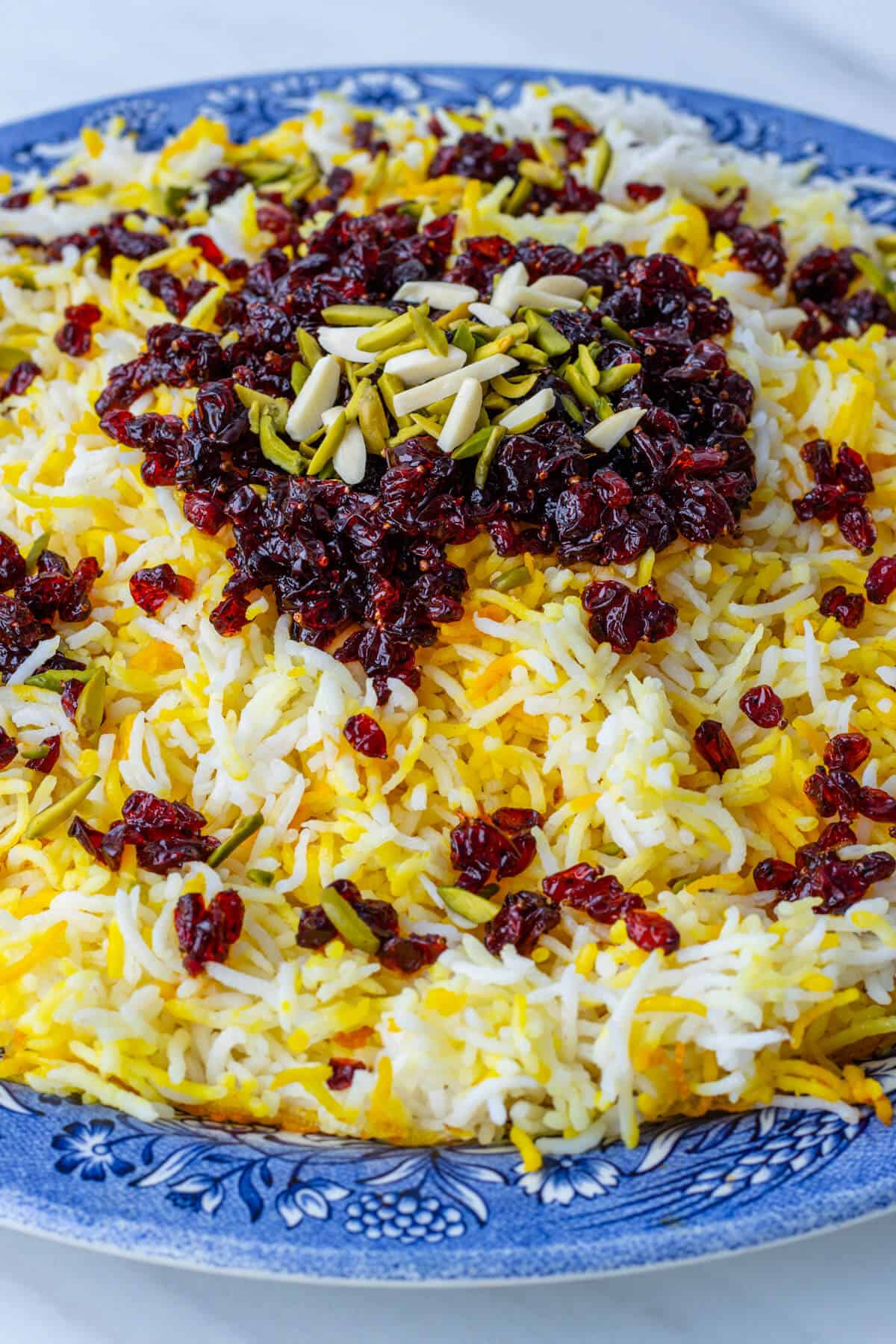
Tips and Tricks
- Always rinse your rice, this is key with Persian rice cooking and will remove excess starch and achieve fluffy rice grains
- Double cooking the rice is the Persian method - first boil until al dente, then steam with the lid wrapped with a towel absorbing any moisture. This keeps the rice and tahdig from getting soggy or mushy
- Make saffron water to get the most out of your saffron. Blooming ground saffron is a crucial step, you can do this in boiling water or over ice cubes which infuses the lovely spice to release its full aroma and color
- Rinse the dried barberries to remove any dust and ensure to continuously stir when cooking with the sugar. They can burn quickly, so keep an eye on them and add a dash of water if needed
- When serving add a layer of the barberry mixture over the rice and top with slivered almonds and pistachios. Keep some of the barberries on the side for anyone that prefers more, I love them and pile them on, so I usually make extra 😉
Storage Instructions
- Store leftovers in an airtight container in the fridge for up to 4 days
- To reheat, add a dash of water over the rice and reheat in a covered pan over medium heat, or you can also microwave it
- Leftover barberry mixture can be reheated separately in a small pan with a splash of water over low heat
- Freeze in an airtight container for up to 1-2 months. Thaw and reheat gently before serving
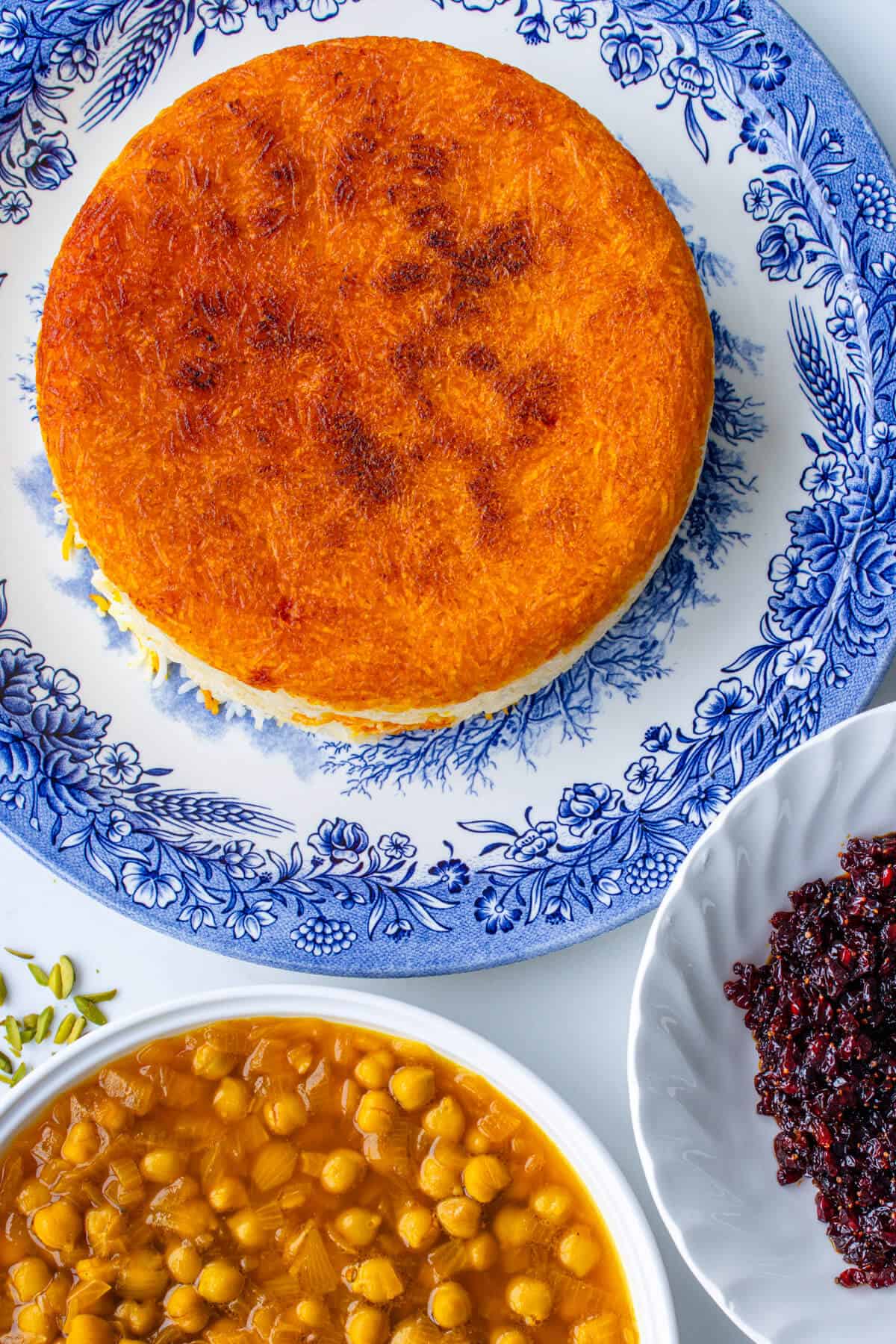
FAQs
Barberries are dried tiny tangy berries commonly used in Persian cuisine. They have a tart flavor and here they are sweetened and cooked with sugar to balance the sourness
Purchase from a Persian supermarket, online, or possibly a Middle Eastern or Indian grocer
Typically, its served with a saffron chicken stew named zereshk polo ba morgh (with chicken). Here I've made a vegan version, with a saffron chickpea stew. You can then serve alongside the popular shirazi salad and mast o khiar (cucumber and yogurt dip)
A good quality non-stick pot works best to achieve that crispy golden crust. Always cook slow over a low heat so it doesn't burn
Saffron is a key ingredient, but if unavailable, you can omit it and make the classic Persian rice with tahdig
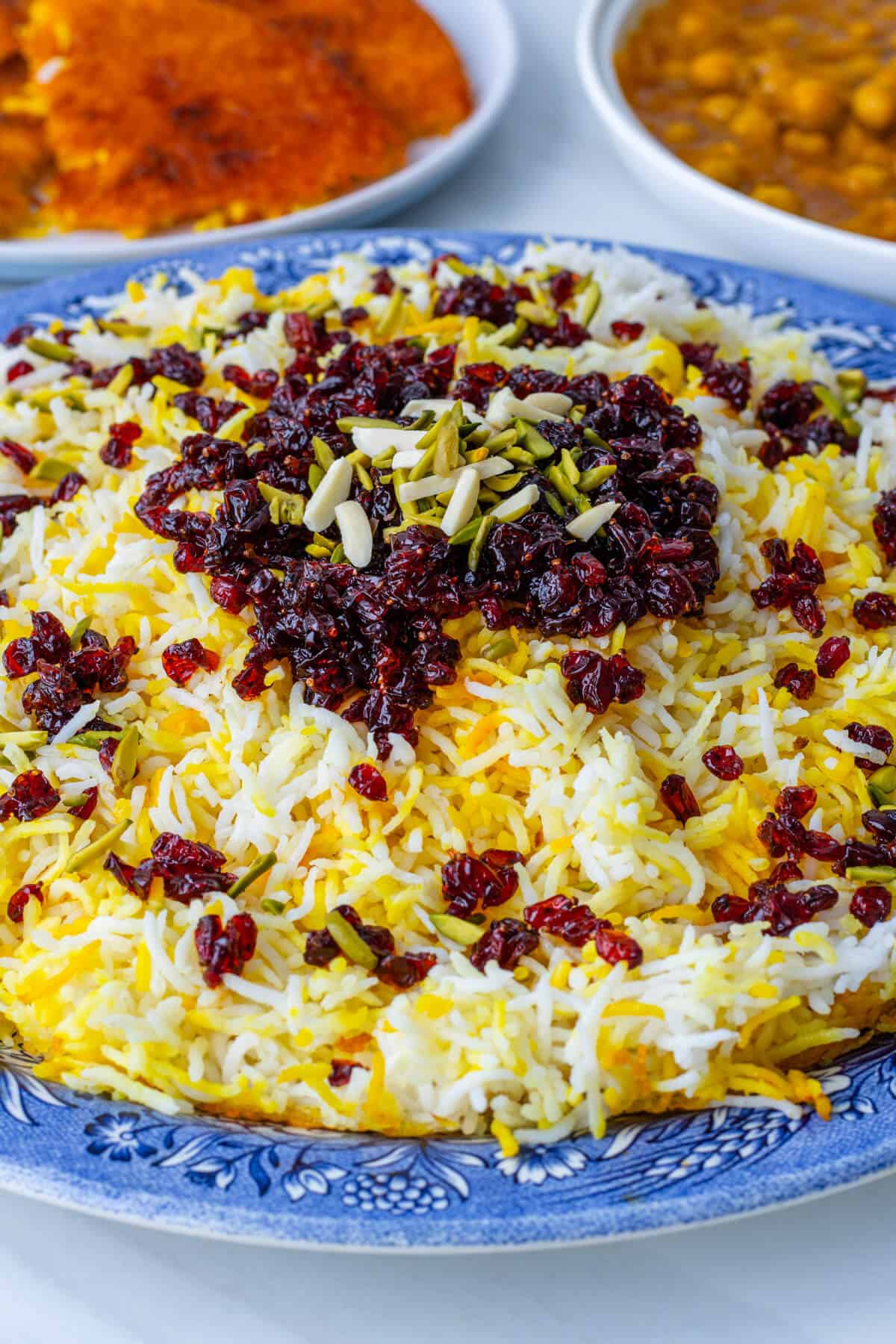
Pairing
These are my favorite dishes to serve with Zereshk Polo:
More Persian Rice
Looking for other Persian recipes like this? Try these:
I love seeing your creations and remakes, so be sure to rate the recipe, comment and share your photo on Instagram so I can share the love!
Recipe

Zereshk Polo - Persian Barberry Rice (Authentic with Mums Tips)
Video
Ingredients
- 2 cups white basmati rice
- ¾ cup dried barberries
- 1.5oz / 45g white sugar
- ½ teaspoon ground saffron - or a good pinch of saffron threads
- 6-8 cups water
- 2 teaspoons salt
- 2-3 tablespoons extra virgin olive oil
- Garnish with slivered pistachios and almonds
- Serve with Persian chickpea stew or saffron chicken stew
Instructions
- Add the basmati rice to a non-stick cooking pot and wash several times under a running tap (approximately 4 - 5 times) until the water runs clear and isn't misty
- Fill the pot with clean water (about 6-8 cups) and add the salt. Simmer over medium-high heat for 10–12 minutes to parboil and partially cook the rice - keep an eye on it so it doesn't overcookIf there is white foam on the top of the water, carefully spoon it out and disregard
- Whilst the rice is boiling, use a mortar and pestle and grind the saffron threads into a powder consistency
- Add about ½ teaspoon or more of the ground saffron to a small glass jar or ramekin. Pour over a few tablespoons of boiling water and allow it to infuse to create a lovely saffron water
- When the grains of rice are al dente, drain through a colander or fine mesh sieve. Carefully rinse under cold water. Don't have the water pressure too high
- To make the saffron tahdig, add a few ladels of the par boiled rice to a bowl. Drizzle over some of the saffron water and stir together - the rice should be lovely and yellow
- Add 2 tablespoons of olive oil to the bottom of the same non-stick pot. Add the saffron rice and gently level it out to an even layer
- Pour in the remaining rice and use the handle of a wooden spoon or tablespoon to make holes into the rice down to the bottom of the pot. These will act as air pockets
- Wrap the lid with a clean kitchen towel, add a splash of water to the pot and place the lid on. Cook on the lowest heat for 45 minutesIf serving with chickpea stew or saffron chicken, prepare this now
- While the rice is cooking, place the barberries in a colander and rinse under cold water. Add them to a pan with 1 tablespoon of olive oil, sugar and a drizzle of the saffron water
- Allow them to simmer over a low heat for 3-5 minutes, stirring frequently so the sugar melts and the barberries soften and become plump and juicy. If needed add a splash of water to ensure they don't burn
- When the rice is ready, remove the lid and place a large dish or serving platter over the pot. Gently flip the pot upside down, then carefully lift the pot and reveal your beautiful Persian rice with crispy saffron tahdig
- Remove the tahdig and sprinkle the top of the rice with a layer of the cooked barberries then garnish with slivered pistachios and almondsEnjoy your Zereshk polo alongside chickpea stew or chicken, shirazi salad and a piece of tahdig!


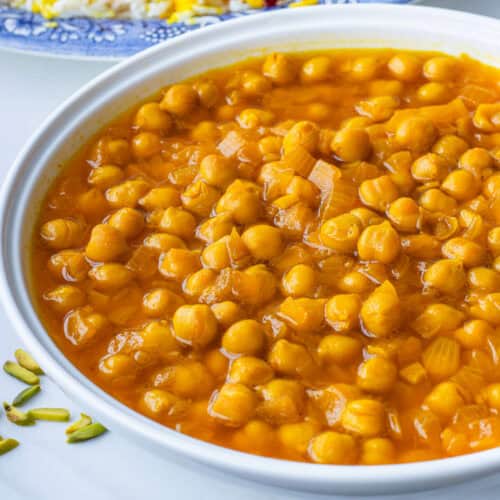
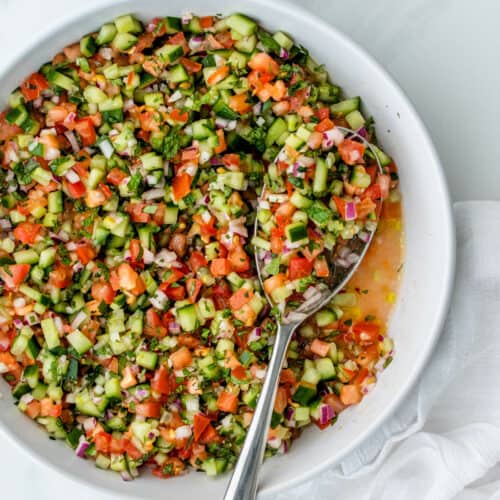
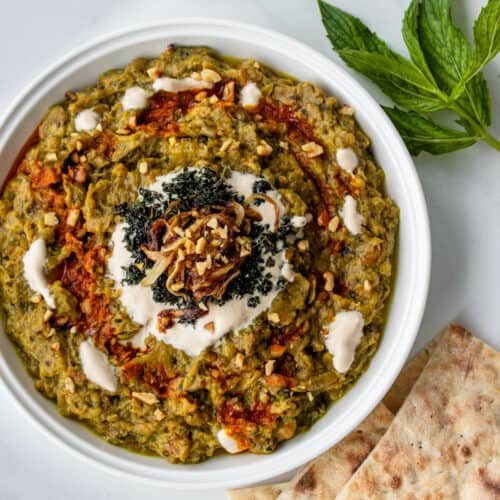
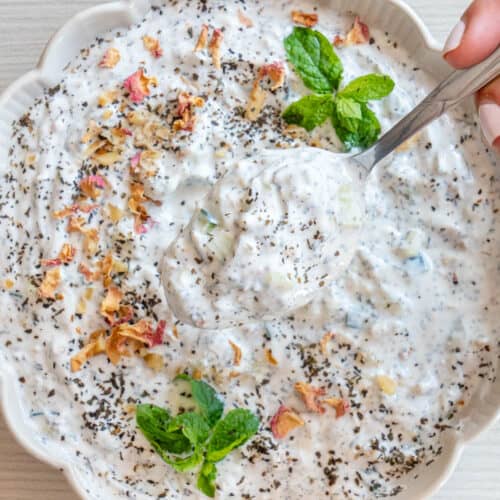
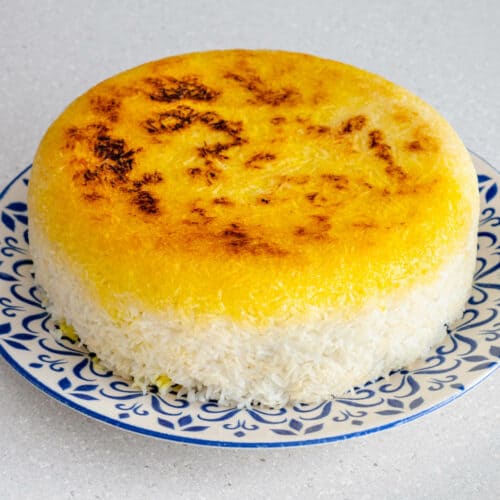
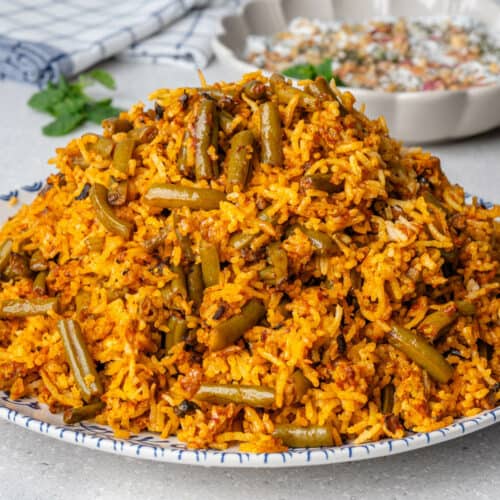
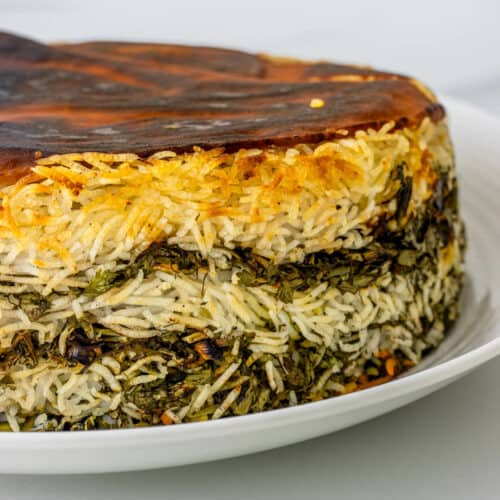
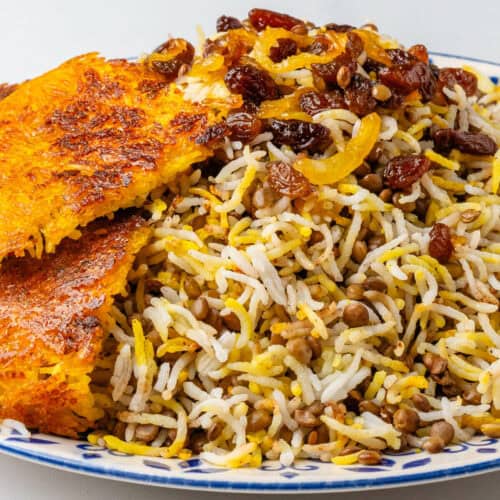
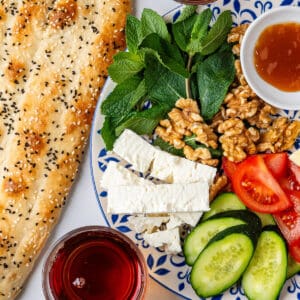
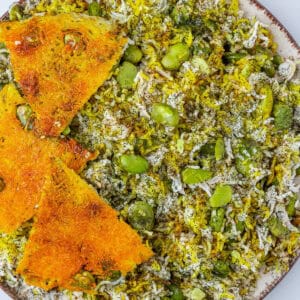
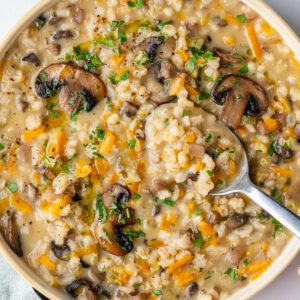
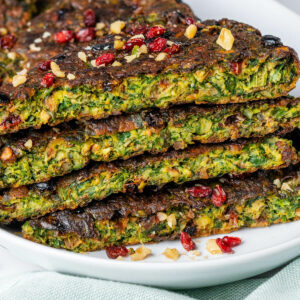
Comments
No Comments